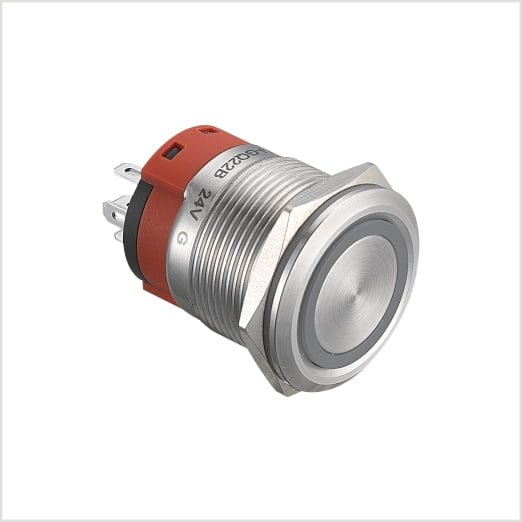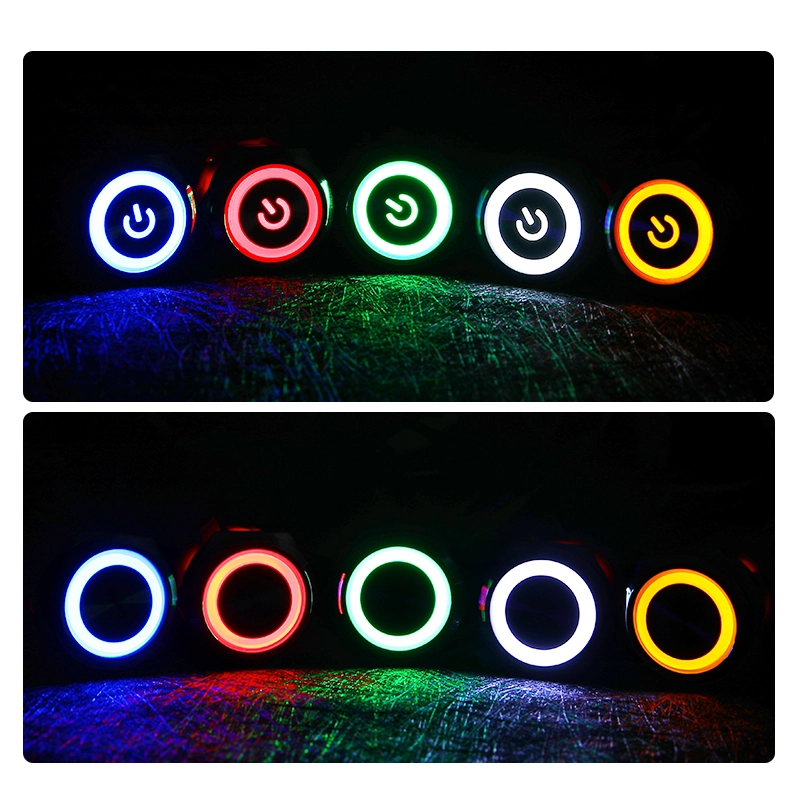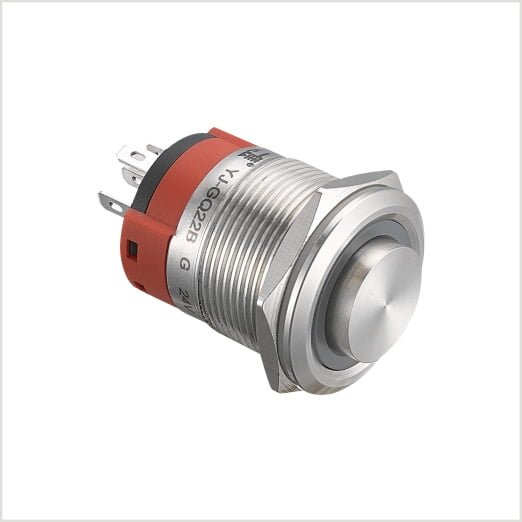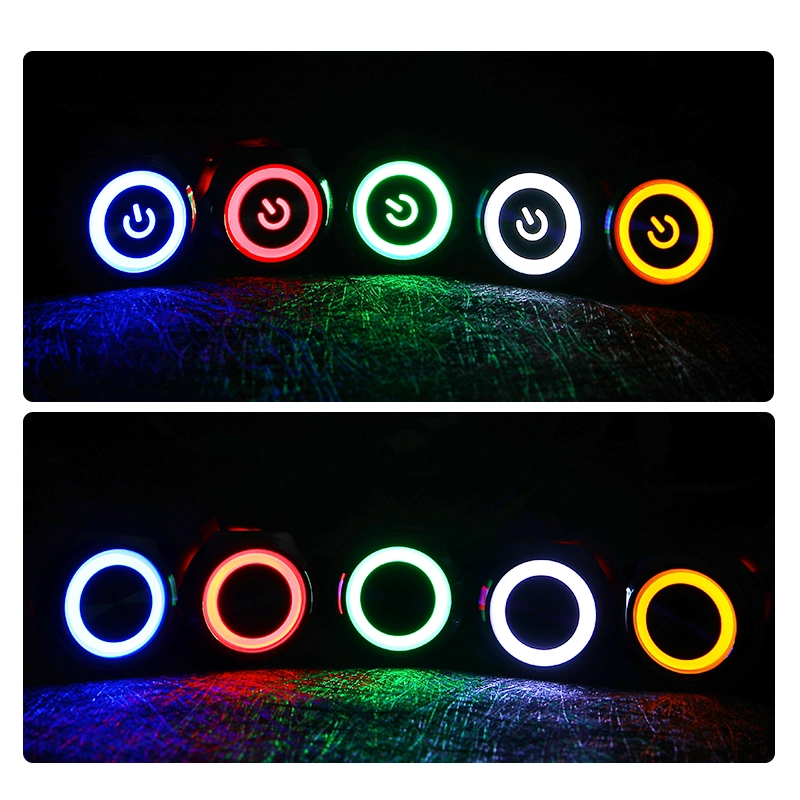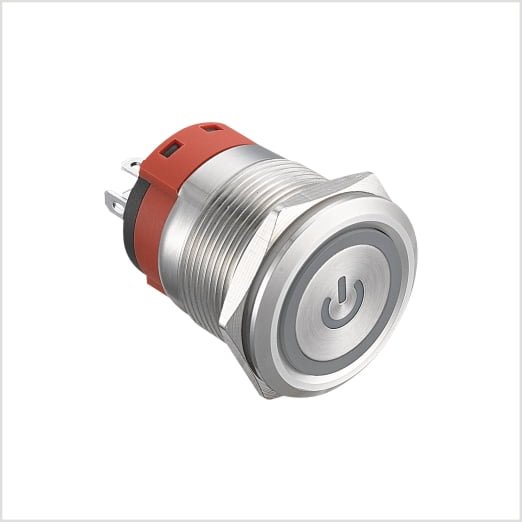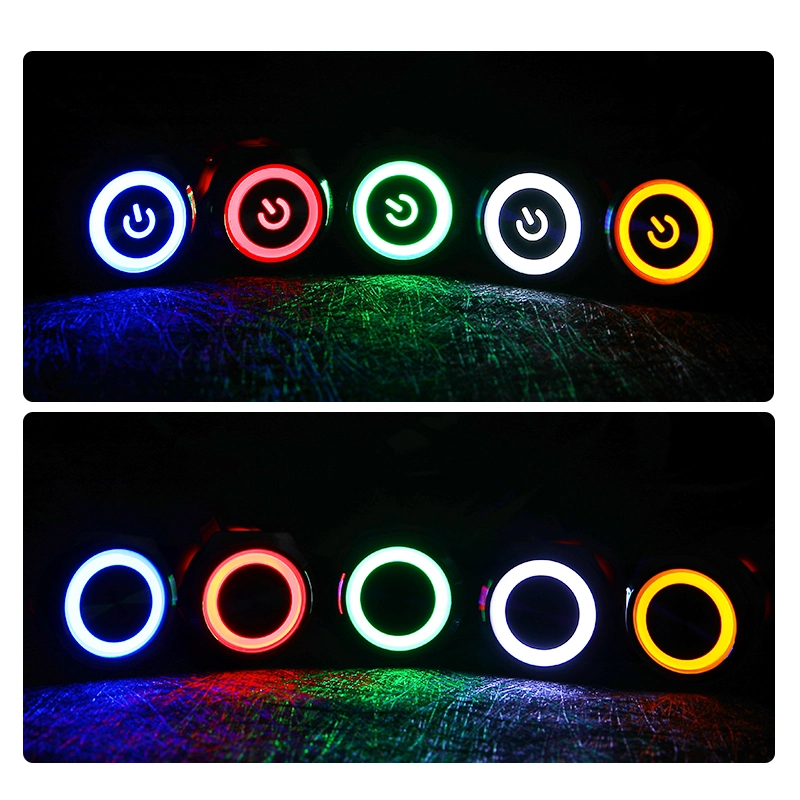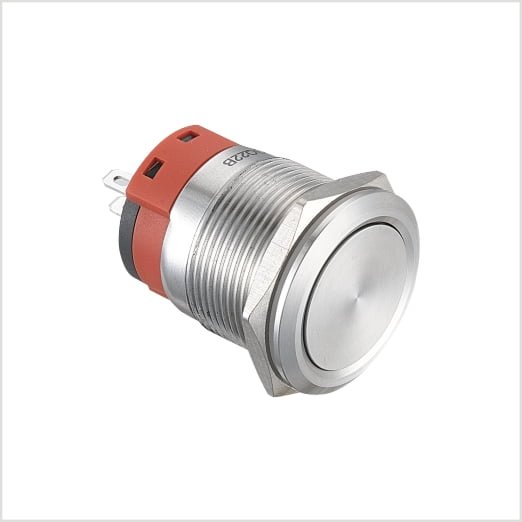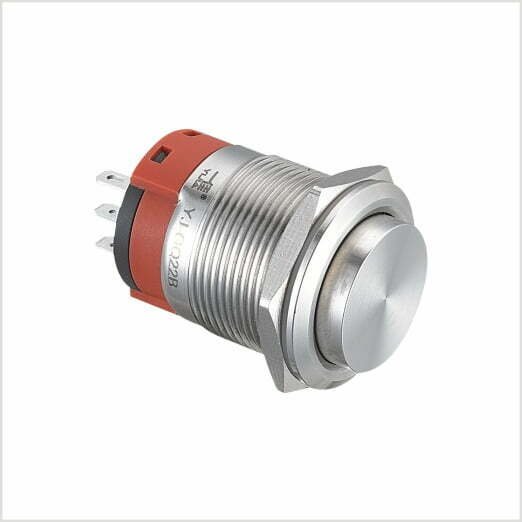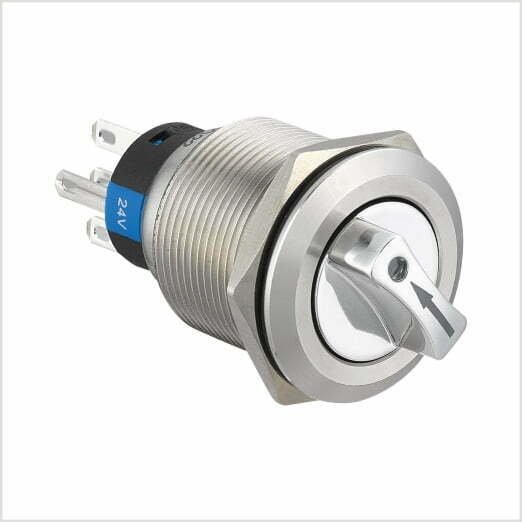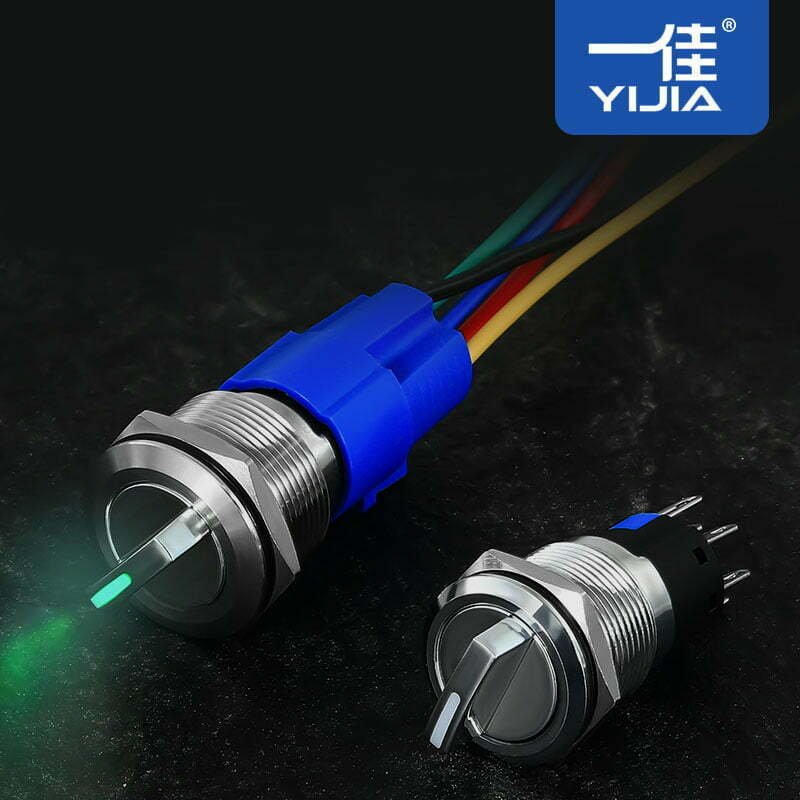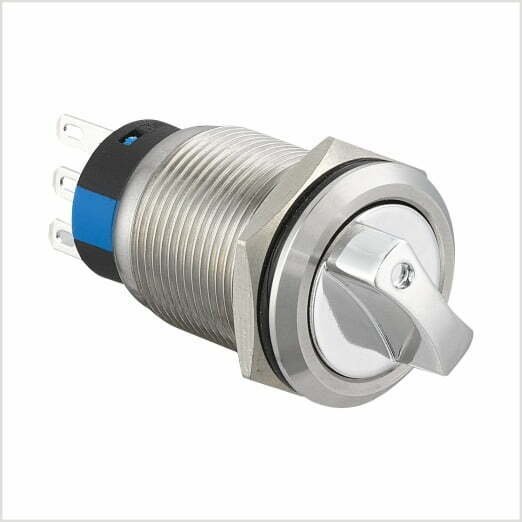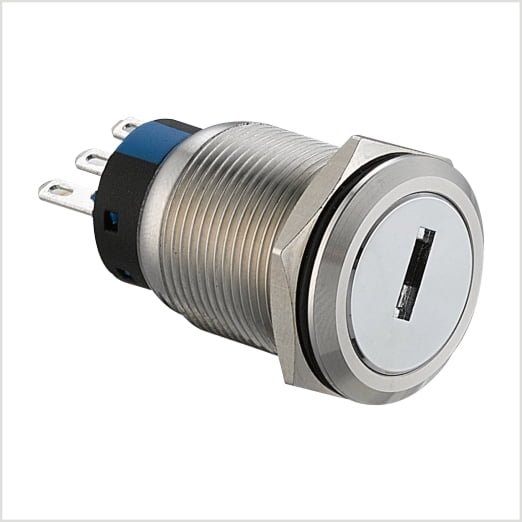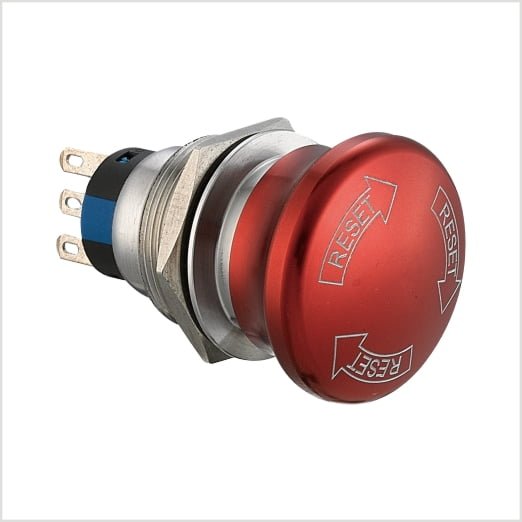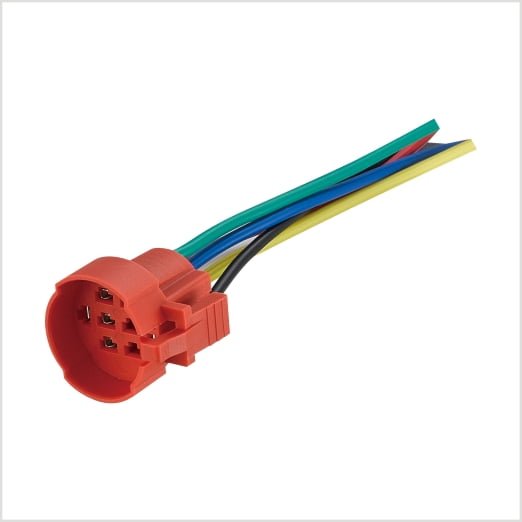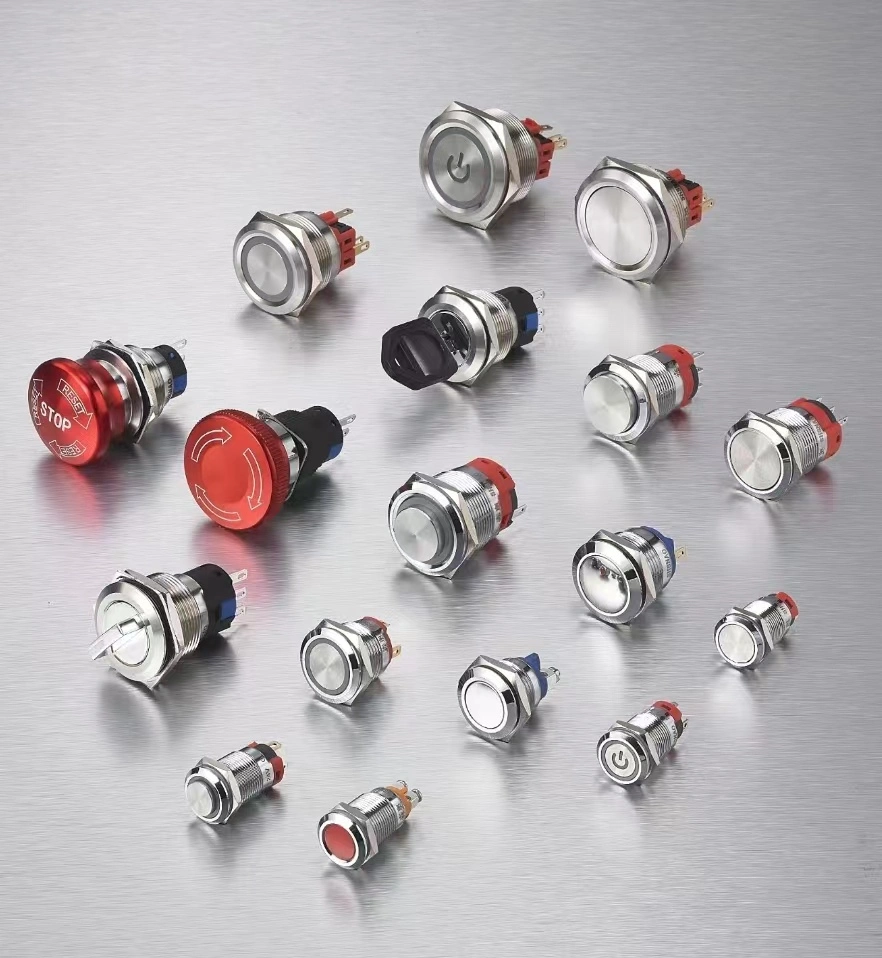yijia Self-locking metal push button switch GQ22B mechanized application
In the field of industrial production, the degree of automation is getting higher and higher, and industrial robots, as an important production tool, have been widely used in various industries.
In order to meet the demanding control requirements of industrial robots, Yijia has introduced the GQ22B series of push-button switches designed specifically for industrial environments.
With its rugged design, high level of protection, various specifications and modes of operation, and easy installation, the switches are a reliable partner in the field of industrial robot control.
Yijia Self-locking Metal Push Button Switch GQ22B Overview
In the field of modern mechanization, self-locking metal push button switches play an important role as a key control element. Yijia Self-locking Metal Push Button Switch GQ22B is a high-performance industrial switch designed for complex mechanized environments. Its main features include:
- Self-locking function: After the button is pressed, it can remain in the pressed state until it is pressed again. This design can reduce the possibility of misoperation.
- Metal shell: Made of high-strength stainless steel, it has good corrosion resistance and mechanical strength.
- High protection level: It reaches IP67 protection level, can be waterproof, dustproof, and oil-proof, and is suitable for various harsh working environments.
- Good operating feel: clear button feedback, comfortable operation, and long service life.
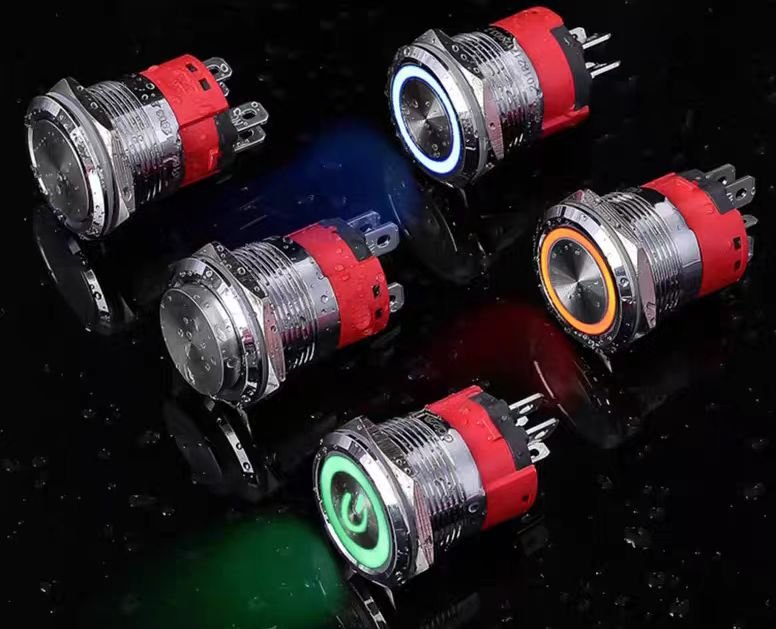

The demand and advantages of mechanization for push button switches
During the operation of mechanized equipment, various control elements are required to achieve precise operation and control. The demand for push button switches is mainly reflected in the following aspects:
- Reliability: It is necessary to maintain stability in high-frequency operations and reduce the failure rate of equipment.
- Protection performance: It needs to be waterproof, dustproof, and oil-proof to adapt to various harsh conditions in the mechanized environment.
- Easy to operate: Operators need to operate quickly and accurately, and the feedback and feel of the push button switch are very important.
- Safety: Prevent misoperation and ensure the safety of operators and equipment.
Advantages
- High reliability: The GQ22B push button switch has undergone strict quality control and testing to ensure that it can operate stably under various harsh conditions, greatly improving the reliability of the equipment.
- Strong protection performance: Its IP67 protection level enables the GQ22B push button switch to work normally in humid, dusty and oily environments, meeting the high requirements of mechanized equipment for protection performance.
- Operational safety: The self-locking function effectively prevents misoperation, especially in critical operations, ensuring the accuracy and safety of operation.
- Strong durability: The high-strength stainless steel shell and high-quality internal components give the GQ22B push button switch an extremely long service life, reducing maintenance and replacement costs.
yijia Specific application of self-locking metal push button switch GQ22B in mechanization
- Automated production line
On automated production lines, yijia GQ22B push button switches are often used for key operations such as starting and stopping machines, switching operating modes, and emergency shutdowns. Its self-locking function ensures the continuity and stability of operation, avoiding production interruptions caused by misoperation. - Industrial robots
Industrial robots usually work in harsh environments and require highly reliable control components. The high protection level of the GQ22B push button switch makes it perform well on the robot operation panel, ensuring the normal operation of the equipment in humid, dusty and oily environments. - Heavy machinery and equipment
Heavy machinery and equipment such as CNC machine tools, punching machines and forging presses require sturdy and durable push button switches. The metal housing and self-locking function of the GQ22B can withstand high-intensity operations and vibrations, ensuring the safe and reliable operation of the equipment. - Automated warehousing system
In automated warehousing systems, yijia GQ22B push button switches are used to control conveyor belts, elevators and sorting equipment. Its high reliability and durability ensure the efficient operation of the warehousing system and reduce the frequency of maintenance and replacement.
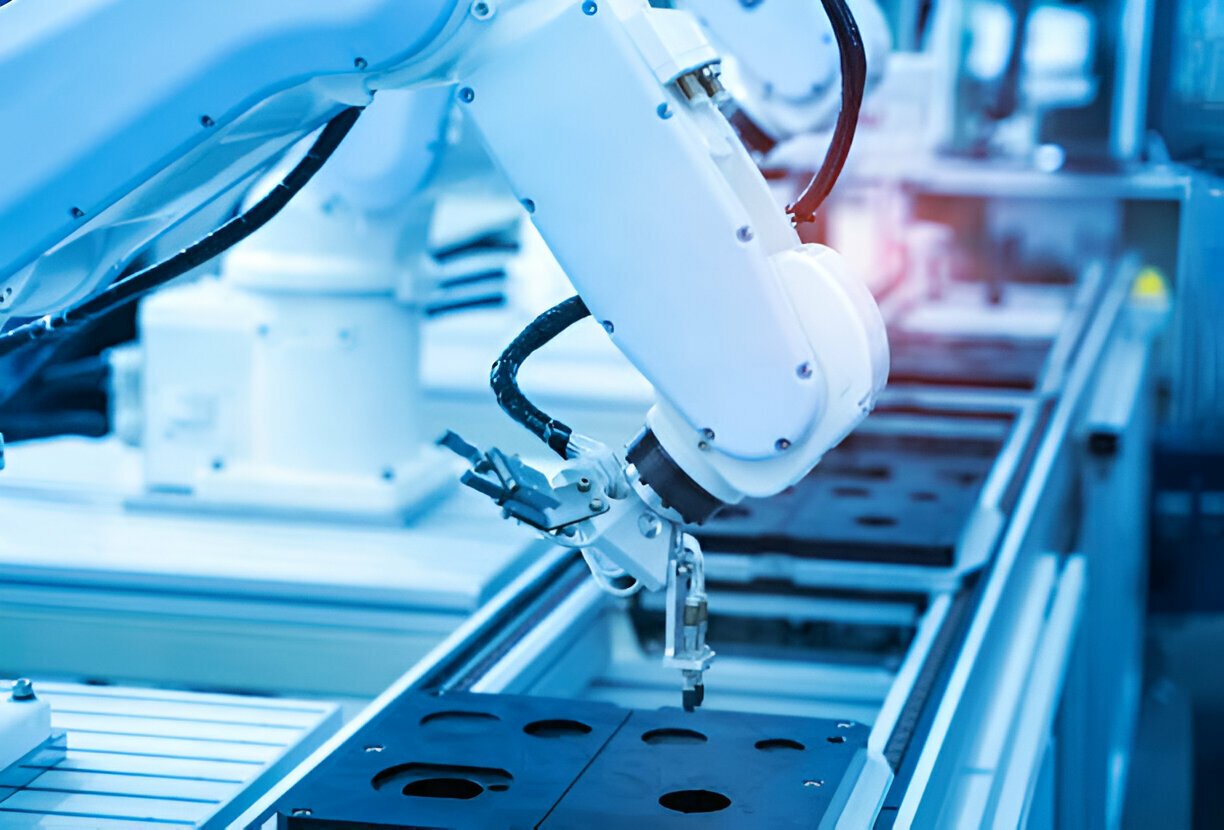

The difference between self-locking metal button switch and push-type metal button switch
There are significant differences between self-locking metal push button switches and push-type metal push button switches in terms of design, function, and application. Understanding these differences can help make more informed decisions during selection and use. Here are their main differences:
Operation mechanism
Self-locking metal push button switch:
- Operation mode: After pressing the button, the button will remain in the pressed state (self-locking) until the button is pressed again, and it will return to the original state. This operation mechanism ensures the continuity of operation.
- Use scenario: Commonly used in occasions that require continuous operation, such as power switch, mode switching, equipment startup, etc.
Press-type metal push button switch:
- Operation mode: When pressing the button, the contact is closed or disconnected, but it returns to the original state immediately after releasing it. The push-type push button switch only changes state at the moment of pressing.
- Use scenario: Suitable for occasions that require instantaneous operation, such as doorbells, signal input, instantaneous start, etc.
Structural design
Self-locking metal push button switch:
- Internal mechanism: It has a mechanical or electronic self-locking mechanism, the structure is relatively complex, and additional components are required to achieve the self-locking function.
- Design considerations: The stability and reliability of the button in different states need to be considered during design.
Push-type metal button switch:
- Internal mechanism: The structure is relatively simple, and only the contact state needs to be changed when pressed, without self-locking mechanism.
- Design considerations: Mainly focus on the response and touch of the pressing moment.
Application occasions
Self-locking metal button switch:
- Applicable equipment: Applicable to equipment that requires continuous control, such as lighting switches, power control, mode selection, etc.
- Common applications: industrial equipment, household appliances, mechanical control panels, etc.
Push-type metal button switch:
- Applicable equipment: Applicable to equipment that requires instantaneous control, such as alarm buttons, start signals, data input, etc.
- Common applications: elevator call buttons, alarm systems, counters, etc.
User experience
Self-locking metal button switch:
- User experience: Press once to maintain the state, the operation is simple and intuitive, but it needs to be pressed again to recover.
- Feedback mechanism: There is usually obvious pressing feedback, and the operation confirmation is strong.
Push-type metal button switch:
- User experience: It needs to be pressed continuously to maintain the state, the operation is relatively frequent, but the instantaneous response is fast.
- Feedback mechanism: There is feedback at the moment of pressing and releasing, which is suitable for fast operation.
Cost and maintenance
Self-locking metal button switch:
- Manufacturing cost: Due to the complex internal structure, the manufacturing cost is relatively high.
- Maintenance cost: The complex structure leads to high maintenance and replacement costs, but generally has a longer service life.
Push-type metal button switch:
- Manufacturing cost: Simple structure, low manufacturing cost.
- Maintenance cost: Simple maintenance, low cost, but may need to be replaced more frequently due to frequent operation.
There are significant differences between self-locking metal push button switches and push-type metal push button switches in terms of operating mechanism, structural design, application scenarios, user experience, and cost maintenance. Self-locking metal push button switches are suitable for occasions that require continuous operation and have high operating stability and safety; while push-type metal push button switches are suitable for occasions that require instantaneous operation, with quick response and easy operation. Choosing the right push button switch according to specific application requirements can improve the operating efficiency and reliability of the equipment.

